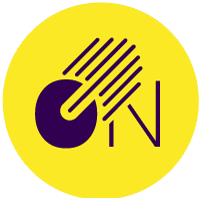Brain activity dictates everything that you feel and eventually do or choose to do. While normal brain function is a common phenomenon, few people have chronic emotions or brain imbalances impacting their lives. But what if there was a way to “unlearn” certain bad habits like chronic anxiety or “learn” to improve mental performance. In order to understand what neurofeedback is, it’s vital to understand what biofeedback is.
What Is Biofeedback?
It’s a process consisting of electronic monitoring of any normal bodily function intended to train someone to gain voluntary control over that function. Through biofeedback you can learn to control things like your heart rate, breathing, muscle tension and even improve your brain function, through a process known as neurofeedback. Now, neurofeedback is a subset or a type of biofeedback. Neurofeedback essentially is just biofeedback for the brain. Neurofeedback, also known as brain training, helps train brain activity and improve cognitive performance.
How do brain waves work?
Brainwaves refer to the electrical impulses produced in the brain for communication between the brain cells. The brainwaves play a significant role in determining what you feel and how you function – your stress levels, thought habits, and overall brain function.
Neurofeedback is a process that consists of placing sensors on the scalp to measure and monitor brain activity. Using brain analysis software like the qEEG brain map, practitioners can identify what particular brain activity is responsible for specific symptoms like anxiety or poor mental performance.
What Exactly Happens in a Neurofeedback Training Session?
EEG sensors that monitor your brainwaves are a core aspect of all neurofeedback programs. Feedback is another vital element of neurofeedback training sessions.
During a neurofeedback session, you sit comfortably in a chair, with a few sensors placed on your scalp in front of a screen or monitor. The screen or monitor helps generate valuable feedback during a session. There are quite a few ways of receiving this feedback: playing games, listening to music, or watching a video.
The catch is that the stimuli (music, game or video) operate smoothly only when the brainwaves function within an optimal range. This stimulus acts as a reward for the brain.
On the other hand, when the brain does not produce waves in an optimal range, you will receive something called negative feedback. For instance, the movie pauses, or the music fades away.
This negative feedback is essentially “telling” your brain that it is headed down the wrong lane. Consequently, the brain has to “figure out” how to restore balance and get the reward again.
Over time, the brain learns from all this feedback. As a result, long-lasting structural changes occur in the brain. Later, the brain consistently chooses specific pathways or operates in an optimal range, even after the brain training sessions, in the absence of any external aid.
Similar to physical exercises aimed at strengthening specific muscles, the more the brain exercises to reach a more efficient state, the better it can do so, also known as a phenomenon called neuroplasticity. The result is higher mental performance or alleviation of symptoms leading to anxiety or stress.
Five Amazing Benefits of Neurofeedback:
-
Bolsters Cognitive Function
Neurofeedback enhances neuroplasticity (the brain’s capacity to adapt and change), and consequently can reverse or slow down the natural aging process.
Research concludes that neurofeedback improves executive function and cognitive processing speed in elderly subjects.
Specific instances of neurofeedback training like the beta rhythms of decreasing sensorimotor rhythm (SMR) can improve reaction time.
Another neurofeedback training session aimed at improving the alpha brain wave activity helped subjects boost their visual-spatial reasoning performance (complex mental object rotation).
Subjects who were able to learn to boost their alpha brain wave activity via neurofeedback performed better at visual-spatial reasoning task (mental object rotation) [21, 22].
-
Improves Sleep Duration and Quality
When neurofeedback stimulates the sensorimotor rhythm (SMR) brain waves, sleep quality increases while time to fall asleep decreases.
Neurofeedback is a massive blessing for insomniacs. Recent research has brought to light that 18 sessions of remote or mobile neurofeedback (conducted by a certified therapist in the convenience via the internet) reduced time to fall asleep while increasing the total sleep duration.
A follow-up study confirmed that the sleep-related benefits that neurofeedback provides lasted up to 9 months. Research also suggests that theta feedback helped tense and anxious patients, while relaxed subjects only found the SMR feedback to be beneficial.
-
Helps Acquire and Hone Skills Faster
Electroencephalogram (EEG) biofeedback, also known as neurofeedback helps promote brain waves associated with relaxation and attention. As a result, professional musicians were able to improve their performance even in stressful conditions.
A follow-up study concluded that alpha/theta neurofeedback enhances the creativity, technical skills, and communication of novice musicians. Additionally, SMR neurofeedback improved their techniques too.
Neurofeedback training (alpha/theta) reportedly improved musical performance of school children. As a result, neurofeedback has immense potential to revolutionize the way students learn in classrooms.
On a side note, neurofeedback helped actors learn quicker while improving their creativity. Moreover, their quality and confidence also increased.
Neurofeedback also impacts athletic performance. Both dance performance and golfing accuracy of subjects improved by neurofeedback.
Furthermore, other essential skills like visual-spatial abilities and reaction time were also improved by neurofeedback.
-
Lowers Anxiety
Neurofeedback can help control and alter emotional processes. Research shows that neurofeedback training aimed at improving subjects’ alpha wave activity reduced several negative emotions, including anxiety.
Neurofeedback training targeting the alpha and theta brain waves boosted confidence and enhanced mood in a study involving medical students.
Theta and alpha brain wave neurofeedback reportedly lowered stress and performance anxiety in singers, musicians, and dancers.
Anxiety and stress are huge productivity killers and can massively impact the mental performance of athletes and celebrities. Neurofeedback helps curb these intense emotions and heighten overall mental performance.
-
Could Help With Depression
Several studies reveal that neurofeedback targeting the alpha brain waves produced in the frontal cortex has vast potential in treating depression by reducing anxiety and boosting moods of individuals.
Hemodynamic (HEG) neurofeedback (that helps control blood flow in particular brain regions) is quite effective in treating depression by stimulating responses to positive memory fragments present in the limbic system (a vital brain network responsible for regulating and processing emotions).
Additionally, a controlled study involving 10 depressed people concluded that neurofeedback helps slow down the brain’s responses to negative information. As a result, their depression symptoms got alleviated.
Conclusion
Neurofeedback is not a gimmick from a sci-fi movie. It’s a real procedure that involves brain training to improve mental performance or alleviate specific issues like insomnia, anxiety, or even depression.
The bottom line is that neurofeedback can forever change the way that a person thinks and processes information, thus substantially changing their life.
References
https://brainworksneurotherapy.com/what-is-neurofeedback
https://www.eeginfo.com/what-is-neurofeedback.jsp
https://www.neurocorecenters.com/neurofeedback
https://brainworksneurotherapy.com/neurofeedback-peak-performance
https://medicalxpress.com/news/2019-03-neurofeedback-anxiety.html




